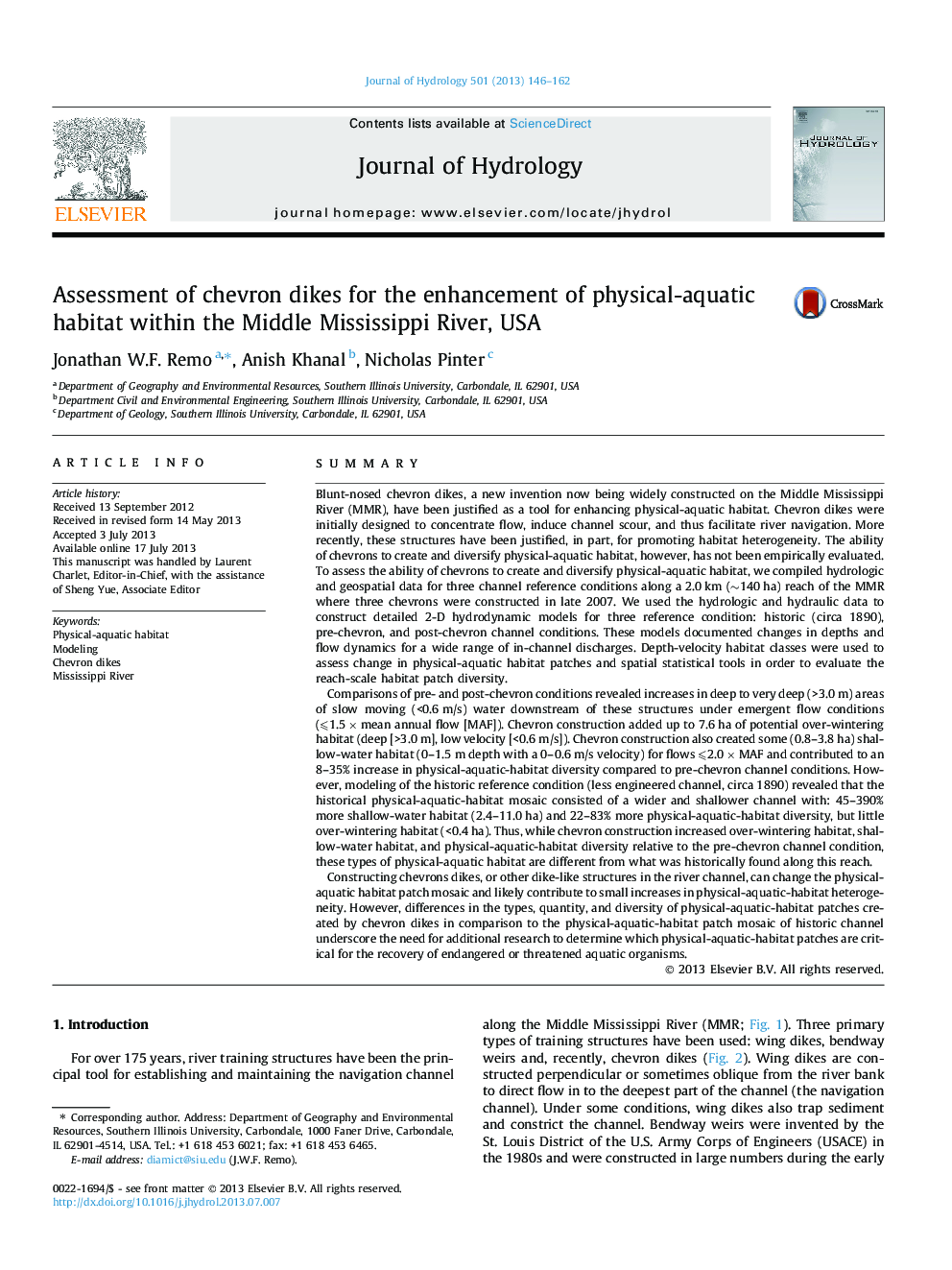| کد مقاله | کد نشریه | سال انتشار | مقاله انگلیسی | نسخه تمام متن |
|---|---|---|---|---|
| 6413524 | 1629947 | 2013 | 17 صفحه PDF | دانلود رایگان |
- Construction of chevron dikes changed physical habitat along the Mississippi.
- Chevron dikes increased physical habitat diversity.
- New habitats created are different than what was historically found along the reach.
- Diversity of habitat is still significantly less than what it was historically.
- Need to determine which habitat patches are critical for endangered organisms.
SummaryBlunt-nosed chevron dikes, a new invention now being widely constructed on the Middle Mississippi River (MMR), have been justified as a tool for enhancing physical-aquatic habitat. Chevron dikes were initially designed to concentrate flow, induce channel scour, and thus facilitate river navigation. More recently, these structures have been justified, in part, for promoting habitat heterogeneity. The ability of chevrons to create and diversify physical-aquatic habitat, however, has not been empirically evaluated. To assess the ability of chevrons to create and diversify physical-aquatic habitat, we compiled hydrologic and geospatial data for three channel reference conditions along a 2.0 km (â¼140 ha) reach of the MMR where three chevrons were constructed in late 2007. We used the hydrologic and hydraulic data to construct detailed 2-D hydrodynamic models for three reference condition: historic (circa 1890), pre-chevron, and post-chevron channel conditions. These models documented changes in depths and flow dynamics for a wide range of in-channel discharges. Depth-velocity habitat classes were used to assess change in physical-aquatic habitat patches and spatial statistical tools in order to evaluate the reach-scale habitat patch diversity.Comparisons of pre- and post-chevron conditions revealed increases in deep to very deep (>3.0 m) areas of slow moving (<0.6 m/s) water downstream of these structures under emergent flow conditions (⩽1.5 Ã mean annual flow [MAF]). Chevron construction added up to 7.6 ha of potential over-wintering habitat (deep [>3.0 m], low velocity [<0.6 m/s]). Chevron construction also created some (0.8-3.8 ha) shallow-water habitat (0-1.5 m depth with a 0-0.6 m/s velocity) for flows ⩽2.0 Ã MAF and contributed to an 8-35% increase in physical-aquatic-habitat diversity compared to pre-chevron channel conditions. However, modeling of the historic reference condition (less engineered channel, circa 1890) revealed that the historical physical-aquatic-habitat mosaic consisted of a wider and shallower channel with: 45-390% more shallow-water habitat (2.4-11.0 ha) and 22-83% more physical-aquatic-habitat diversity, but little over-wintering habitat (<0.4 ha). Thus, while chevron construction increased over-wintering habitat, shallow-water habitat, and physical-aquatic-habitat diversity relative to the pre-chevron channel condition, these types of physical-aquatic habitat are different from what was historically found along this reach.Constructing chevrons dikes, or other dike-like structures in the river channel, can change the physical-aquatic habitat patch mosaic and likely contribute to small increases in physical-aquatic-habitat heterogeneity. However, differences in the types, quantity, and diversity of physical-aquatic-habitat patches created by chevron dikes in comparison to the physical-aquatic-habitat patch mosaic of historic channel underscore the need for additional research to determine which physical-aquatic-habitat patches are critical for the recovery of endangered or threatened aquatic organisms.
Journal: Journal of Hydrology - Volume 501, 25 September 2013, Pages 146-162
